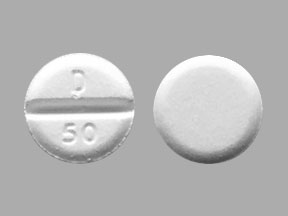Keveyis Disease Interactions
There are 9 disease interactions with Keveyis (dichlorphenamide).
- Acidosis
- Adrenocortical insufficiency
- Dehydration
- Hepatic disease
- Pulmonary disease
- Renal dysfunction
- Respiratory acidosis
- Diabetes mellitus
- Gout
Dichlorphenamide (applies to Keveyis) acidosis
Major Potential Hazard, Moderate plausibility.
The use of dichlorphenamide is contraindicated acidotic patients (hyperchloremic or respiratory).
Dichlorphenamide (applies to Keveyis) adrenocortical insufficiency
Major Potential Hazard, Moderate plausibility. Applicable conditions: Adrenal Insufficiency
The use of dichlorphenamide is contraindicated in adrenocortical insufficiency.
Dichlorphenamide (applies to Keveyis) dehydration
Major Potential Hazard, Moderate plausibility. Applicable conditions: Hypokalemia, Hyponatremia
The use of dichlorphenamide is contraindicated in patients with hyponatremia or hypokalemia, or in conditions in which serum levels of sodium or potassium are depressed.
Dichlorphenamide (applies to Keveyis) hepatic disease
Major Potential Hazard, Moderate plausibility. Applicable conditions: Liver Disease
The use of dichlorphenamide is contraindicated in hepatic insufficiency.
Dichlorphenamide (applies to Keveyis) pulmonary disease
Major Potential Hazard, Moderate plausibility. Applicable conditions: Chronic Obstructive Pulmonary Disease
Dichlorphenamide should not be used in patients with severe pulmonary obstruction who are unable to increase their alveolar ventilation as their acidosis may be increased.
Dichlorphenamide (applies to Keveyis) renal dysfunction
Major Potential Hazard, Moderate plausibility.
The use of dichlorphenamide is contraindicated in renal failure.
Carbonic anhydr. inhibitors (applies to Keveyis) respiratory acidosis
Moderate Potential Hazard, Low plausibility. Applicable conditions: Chronic Obstructive Pulmonary Disease
Carbonic anhydrase inhibitors may exacerbate pulmonary disease in patients with elevated pCO2 levels. Respiratory acidosis may be precipitated or increased in these patients. Therapy with carbonic anhydrase inhibitors should be administered cautiously in patients with respiratory acidosis, and conditions where alveolar ventilation may be impaired (pulmonary obstruction, emphysema, etc) and can precipitate or aggravate acidosis. Respiratory status should be monitored during therapy.
Carbonic anhydrase inhibitors (applies to Keveyis) diabetes mellitus
Moderate Potential Hazard, Low plausibility.
Elevation of blood glucose, possibly caused by hypokalemia, and glycosuria have been reported rarely in diabetics receiving carbonic anhydrase inhibitors. Therapy with carbonic anhydrase inhibitors should be administered cautiously in patients with diabetes mellitus. Routine glucose monitoring is recommended during therapy.
Carbonic anhydrase inhibitors (applies to Keveyis) gout
Moderate Potential Hazard, Moderate plausibility.
Uric acid excretion is decreased during therapy with carbonic anhydrase inhibitors, and gout may be exacerbated. Therapy with carbonic anhydrase inhibitors should be administered cautiously in patients with gout. Elevated serum uric acid levels return to normal when the drug is discontinued. Monitoring of uric acid levels is recommended in these patients.
Switch to professional interaction data
Keveyis drug interactions
There are 255 drug interactions with Keveyis (dichlorphenamide).
More about Keveyis (dichlorphenamide)
- Keveyis consumer information
- Check interactions
- Compare alternatives
- Pricing & coupons
- Reviews (2)
- Drug images
- Side effects
- Dosage information
- During pregnancy
- Generic availability
- FDA approval history
- Drug class: carbonic anhydrase inhibitors
- En español
Related treatment guides
Drug Interaction Classification
| Highly clinically significant. Avoid combinations; the risk of the interaction outweighs the benefit. | |
| Moderately clinically significant. Usually avoid combinations; use it only under special circumstances. | |
| Minimally clinically significant. Minimize risk; assess risk and consider an alternative drug, take steps to circumvent the interaction risk and/or institute a monitoring plan. | |
| No interaction information available. |
See also:
Further information
Always consult your healthcare provider to ensure the information displayed on this page applies to your personal circumstances.


